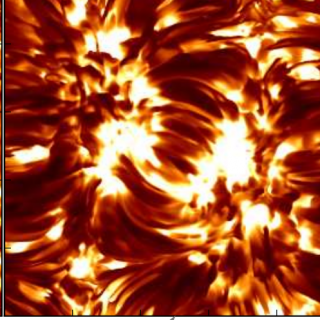Bibcode
Cubas Armas, M.; Asensio Ramos, A.; Socas-Navarro, H.
Referencia bibliográfica
Astronomy and Astrophysics, Volume 600, id.A45, 6 pp.
Fecha de publicación:
3
2017
Revista
Número de citas
6
Número de citas referidas
6
Descripción
Aims: The purpose of this work is to better understand the
confidence limits of the photospheric solar oxygen abundance derived
from three-dimensional models using the forbidden [OI] line at 6300
Å, including correlations with other parameters involved.
Methods: We worked with a three-dimensional empirical model and two
solar intensity atlases. Bayesian inference was employed as a tool to
determine the most probable value for the solar oxygen abundance given
the model chosen. We considered a number of error sources, such as
uncertainties in the continuum derivation, in the wavelength calibration
and in the abundance/strength of Ni. Results: Our results show
correlations between the effects of several parameters employed in the
derivation. The Bayesian analysis provides robust confidence limits
taking into account all of these factors in a rigorous manner. We obtain
that, given the empirical three-dimensional model and the atlas
observations employed here, the most probable value for the solar oxygen
abundance is log (ɛO) = 8.86 ± 0.04. However,
we note that this uncertainty does not consider possible sources of
systematic errors due to the model choice.
Proyectos relacionados

Magnestismo Solar y Estelar
Los campos magnéticos son uno de los ingredientes fundamentales en la formación de estrellas y su evolución. En el nacimiento de una estrella, los campos magnéticos llegan a frenar su rotación durante el colapso de la nube molecular, y en el fin de la vida de una estrella, el magnetismo puede ser clave en la forma en la que se pierden las capas
Tobías
Felipe García

Magnetismo, Polarización y Transferencia Radiativa en Astrofísica
Los campos magnéticos están presentes en todos los plasmas astrofísicos y controlan la mayor parte de la variabilidad que se observa en el Universo a escalas temporales intermedias. Se encuentran en estrellas, a lo largo de todo el diagrama de Hertzsprung-Russell, en galaxias, e incluso quizás en el medio intergaláctico. La polarización de la luz
Ernest
Alsina Ballester